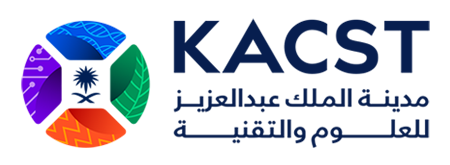Introduction:
Warehousing and inventory control are vital components of procurement, logistics, and distribution processes, significantly impacting customer service delivery. Despite their importance, proper storage and inventory control are often overlooked. Mismanagement in inventory levels can result in increased costs, product availability issues, and diminished customer satisfaction.
Objectives:
Managers and practitioners in charge of Optimizing Warehouse, Inventory, and Stock Control Operations: Best Practices will be able to:
- Understand the fundamentals of warehouse and inventory management.
- Analyze and improve existing stocktaking and inventory management practices.
- Critically evaluate shipping and other warehouse-related activities.
- Utilize key performance indicators to enhance warehouse and inventory efficiency.
- Implement operational improvements to boost customer service while reducing inventory levels.
- Increase personal productivity.
- Revise practices to improve customer service and inventory reduction.
- Avoid unnecessary expenses.
- Address internal problems that limit productivity.
- Achieve better value for money.
- Learn and apply basic principles of warehouse and inventory control within the supply chain.
Training Methodology:
- Case Studies
- Simulations
- Workshops
- Group Discussions
- Role-Playing
- Technology Demonstrations
- Benchmarking
Course Outline:
Unit 1: What is a Warehouse? Concept of the Warehouse
- Definition and purpose of a warehouse.
- Functions of warehouses.
- Role in the supply chain.
- Balancing sorting and storing.
- Key questions for warehousing activities.
Unit 2: Product Classification
- Supply/demand variables.
- ABC Analysis (80/20 rule).
- Product handling groups.
- Throughputs and product formats.
Unit 3: Layout Options
- Receiving options.
- Storage options.
- Picking/assembly options.
- Dispatching options.
- Floor and height space utilization.
- Organizing for flow.
Unit 4: Methods and Equipment
- Warehouse structures.
- Loading bays.
- Forklift trucks.
- Racking systems.
- Design impacts.
- Warehousing timing and planning.
Unit 5: Health and Safety
- Duty of care.
- Inspections and risk analysis.
- Equipment maintenance.
- Raising awareness.
Unit 6: Security and Loss
- Policies to reduce internal theft.
- Policies to reduce external theft.
- Anti-theft strategies.
Unit 7: Productivity and Costs
- Fixed and variable costs.
- Typical costs in warehousing.
- Productivity models and performance levels.
- Measurement methods and key performance indicators.
Unit 8: Service Levels
- Internal and external customers.
- Customer care measures.
- Service evaluation.
- Impact of poor service.
- Reducing defects.
Unit 9: Warehouse Layout
- Layout strategies.
- Designing for storage and material flow.
- Decision-making aids.
Unit 10: Inventory and the Supply Chain
- Definition and types of inventory control.
- Stock types.
- Bullwhip effect.
- Production on demand.
- Managing flows.
- Supply chain concepts.
- Marginal cost analysis.
- Statistical inventory management.
- Service level concepts.
Unit 11: Inventory Key Concepts
- Demand analysis.
- Forecasting demand.
- Supply lead time.
- Cost and benefits analysis.
- Stock management rules.
- Understanding inventory in institutions.
Unit 12: Methods and Systems for Stock Replenishment
- Replenishment systems (e.g., Min/Max, ROP/ROL, Just-in-Time).
- MRP/MRPII planning systems.
Unit 13: Stock Control - Coding
- Coding systems.
- Importance of accurate receipts.
- Stock on hand, surpluses, and obsolescence.
- Checklist for stock control.
Unit 14: Stock Control - Recording
- Individual responsibilities.
- Legal issues.
- Common mistakes.
Unit 15: Stock Control - Checking
- Roles and responsibilities.
- Job descriptions.
- Hierarchy of authority.
- Inventory counting options.
- Handling discrepancies.
Unit 16: Inventory Performance
- Managing inventory performance.
- Stock level management.
- Models for preventing stockouts.
- Setting stock levels.
- Inventory KPIs.
Unit 17: Inventory Strategies
- Push/pull strategies.
- Quick Response (QR).
- Efficient Consumer Response (ECR).
- Collaborative Planning Forecasting and Replenishment (CPFR).
- Lean and agile strategies.
- Quality management.
- Delaying or postponement.
- Cross Docking.
- Bundling.
- Vendor-Managed Inventory (VMI).
- Stock consignment.
- Co-managed Inventory (CMI).
- Direct Product Profitability (DPP).
- Economic Value Added (EVA).
- Collaborative supply chains.
Unit 18: Improving Inventory
- Supply Chain Theory of Constraints.
- Inventory management improvements.
- Call-offs and telemetry.
- EDI and ICT.
- Reducing stock quantities.
- Stock control rules.
- Stock planning process model.


















